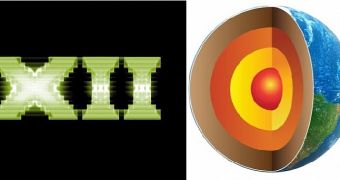Microsoft launched the DirectX 12 application programming interface this week, which may have raised questions as to what this could mean for the Mantle API from Advanced Micro Devices. I’m here to answer some of them.
DirectX 12 is an API that promises similar frame rate and CPU-GPU collaboration improvements as those found in AMD’s Mantle (ergo, direct hardware-level access to processes for both the CPU and the GPU).
However, the implementation is different, and will require that game developers utilize different coding if they want both APIs supported.
And that’s where the question comes in: will AMD’s Mantle API still thrive now that Microsoft has launched DX12? The answer, in short, is yes.
The similarities
Both AMD’s Mantle API and the Microsoft DirectX 12 promise that they will allow the CPU and GPU to communicate directly and distribute processing tasks optimally, instead of the CPU giving the GPU a share after going through the OS (and the GPU is usually underutilized anyway).
Thus, while Mantle enables up to 45% frame rate improvement compared to DX11 in the few games it has been adopted by (Star Swarm, Battlefield 4, the Crytek’s CryEngine titles), DirectX 12 won’t be so far behind in that area, if at all.
Also, Mantle only works on GPUs based on the AMD Graphics Core Next architecture, so one could make a case that AMD’s solution is restrictive without offering any noticeable benefits.
However, if a year passes and these continue to be the only arguments in favor of using DX12 instead of Mantle, I can safely say that AMD has nothing to worry about.
The breakdown
First off, there has been no comparison between game demos based on Mantle and titles based on DirectX 12, so we can’t say which is better, if any. It might ultimately be a matter of how well the game makers actually code things.
On the other hand, there also isn’t a percentage given for how much better DX12 games will use GPU resources than DX11.
And so we reach the first key detail: DirectX 12 won’t really become a marketing factor until next year, whereas AMD Mantle is already featured in games that are for sale, and have been since late 2013.
Advanced Micro Devices has essentially given itself a head start of one year, one year and a half if DX12 titles only debut in the second or third quarter of 2015.
This means that Mantle will already be an established brand and game development model by the time 2015 rolls around. It also means that AMD will have had over a year to refine the API and optimize the video drivers for titles coded in it.
Also, the Sunnyvale-based corporation will obviously negotiate further deals with game makers over the next 12 months and beyond.
And since NVIDIA doesn’t have something along the lines of Mantle, there will be no competition from that area either, until then.
The conclusion
Besides securing its own future, AMD Mantle might become a sort of measuring post for DirectX 12 games. If Mantle enables games to run 30-45% better than on DirectX 11, then the same games will need to run at least as well on DX12.
It’s not just a matter of pride for Microsoft, but it will determine the sales success of NVIDIA’s graphics cards too. After all, the GeForce marketing appeal will be tied into how well the cards run games and, thus, how well DirectX 12 titles work on the boards.
And if it’s found that Mantle runs them better, you don’t need to be a genius to guess that hardware buyers will default to Radeon. Mainstream and high-end add-in cards are all about gaming after all. Add to that the fact that GCN boards support DX12 just fine and AMD doesn't have much to lose at all.
At this point, I’m just waiting to see a DirectX 12 benchmark, and the inevitable comparison between it and the corresponding Mantle API test on the same game.

 14 DAY TRIAL //
14 DAY TRIAL //